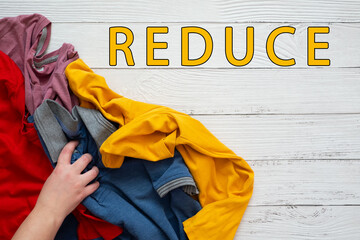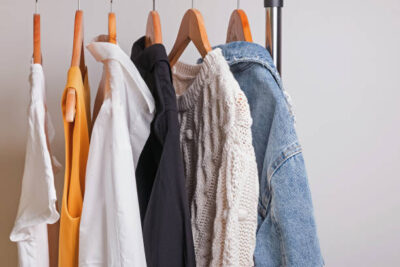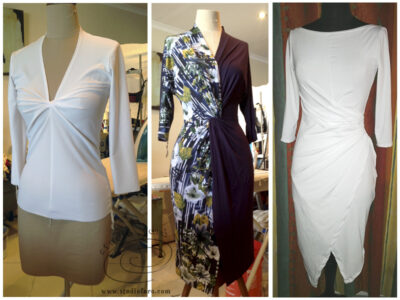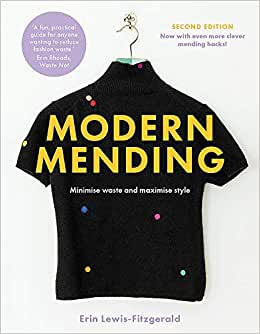05 Jun Building the Minimalist Wardrobe
One of the biggest pitfalls in being a designer/pattern maker is the making and testing of sewing patterns, and the continual accumulation of sample garments related to these patterns. For the on-going operation of my business I have to make these samples to test my patterns. But personally I don’t really ever need more clothes, but many of these samples end up in my wardrobe. Many designers have regular sample sales to pass on these items to a more useful end or send them to the local charity shop for resale. Clearly I’m having trouble distinguishing between personal clothing needs and the output of my creative work.
TOO MUCH CLOTHING
It’s possible that we all have too much clothing in our wardrobes. Current thinking would have us examine our level of consumption and consider whether we have much more than we need. And if we do to think about reducing our consumption and focus on what we really need in our lives. Do we own our possessions or do they own us?
NOTHING NEW HERE
The idea of the minimalist wardrobe or lifestyle is nothing new. There are an abundance of blogs, Youtube channels and books on the subject. One movie in particular has moved me to review my possessions and try to decide what’s important and what’s not. I’ve used a few of those references to put this post together and have listed them at the end of the post.
The most delightful thing for me about all this information is it provides me with a framework for going on my own minimalist journey.
The most delightful thing for me about all this information is it provides me with a framework for going on my own minimalist journey.

THE WARDROBE
I have been aware for a long time that there are many items of clothing in my wardrobe that I dearly love but that I never/rarely wear. On many occasions I have attempted to separate those items from the garments that I regularly wear with little success.
There are a number of reasons why clothing items may be redundant in your wardrobe:
-
- Wrong Size
- Duplicate Items
- No Longer Useful
- In Need of Repair
- Stuff you Never Wear
What has proven to be the most effective method for me to identify the important items in my wardrobe is to add the freshly washed clothes to one end of the rail/wardrobe . Then after a few months have a look at what remains at the opposite end of the rail/wardrobe to see what clothing items I haven’t been wearing regularly.
1. Wrong Size
For so long I’ve been holding onto items that are either favourites or high quality pieces but most definitely the wrong size. There is nothing wrong with being a little aspirational towards slightly smaller items of clothing if they are of great value to you. But it may be wise to put a time limit on those aspirations. Let’s say 6-12 months and if by that time you’re not able to fit into the clothing then it might be a good idea to pass it on.
2. Duplicate Items
I know it sounds ridiculous but it’s not uncommon to find duplicate purchases once you begin to sort through all your clothing. And there are some items that are so often worn that duplicates are warranted. Exercise tights, jeans, T shirts are regular favourites and we usually have more than one of each.

3. No Longer Useful
If you have spent anytime in the corporate world you know that there are specific expectations regarding the way you dress. But most of the time that clothing is of little use if you retire or decide to change your career. No matter how wonderful your corporate suits are they often have no place in your new life. They would however be of great benefit to others just starting their corporate career. Pass them on to people you know or a local charity shop.
Your minimalist wardrobe should reflect your (new) life and activities.
4. In Need of Repair
Any items in your wardrobe that are in need of repair can be separated and dealt with according to their value in re-use. You can either take your repairs to the local alterations and repair shop or you can learn to make your own repairs. There are many up-to-date references for mending available in print and video. And many new and interesting ways to mend and repair our clothing.
Once repaired you can decide if they are important in your wardrobe or better to be passed on for re-use.
5. Stuff You Never Wear
So now to deal with the clothing that collects dust at the wrong end of the wardrobe. These pieces would have originally had some value to you for either work or recreation. But clearly through testing you haven’t worn them in quite a while.
WAIT AND SEE
As soon as you’ve thinned out your wardrobe using all the ideas above it’s then time to consider whether you still have too many clothes. Perhaps leave it for a few months and see if any of your saved items of clothing haven’t been worn at all and are collecting dust at the back of your wardrobe.
WHAT TO DO WITH THE EXCESS
-
- Swap & Re-use Parties – these events are becoming more and more popular in this climate of re-use, recycle and resistance to fast fashion. If you don’t already have a local event, perhaps you could start one yourself with your friends or a local sewing group.
- Charity Shops – Any items that are clean and in good repair are welcome in most charity shops. Please don’t send them any clothes that are no longer wearable or dirty. They already have an issue with a lot of donated clothing not being suitable for resale and causing a huge amount of waste that costs them in removal.
- Sell Them Online – Ebay and Facebook marketplace are popular venues for the resale of unwanted clothing.
I’d love to hear from you about your minimalist journey. Whether you are limiting your purchases of new clothes or cleaning out your wardrobe. Do leave your comments below.

Reading:
How to Start a Minimalist Wardrobe
ABC Series: War on Waste
The Minimalist Lifestyle: The Minimalists




Liz Haywood
Posted at 18:06h, 07 JuneFrom the very first paragraph, this post totally resonates! My wardrobe is so full there is hardly any need for coat hangers – everything is wedged in there so tightly! I think this is the nudge I need for a wardrobe edit.
By the way, what are your thoughts on a fashion design business having an archive versus selling their samples?
Studio Faro
Posted at 16:54h, 08 JuneLiz I think an archive is a great idea. Particularly if it is well considered or themed to fit an area of interest or study. Your zero-waste work would make an ideal archive. Then the only problem will be finding a location to store your archive. If you’re fortunate you might find a local museum or university that would see the value in storing/exhibiting these archived works. Keep me posted on your thoughts in this area.
neucarol
Posted at 23:24h, 07 JuneAnita, thanks for this article. It couldn’t have been more timely as I’ve been dealing with excess clothing since I retired and my lifestyle no longer meets my passion for fashion. I have no issues identifying what needs to go, it’s finding a place for them to go.
Poshmark has been a good retail outlet for shoes, bags and some clothing. However, have not found that my high-end, classic fashion sells. Consignment, and even some thrift shops will only accept current fashion. That leaves vintage. Here again, the newest of ‘vintage’ does not appear to have much of a market.
Hoping your readers may have more suggestions of where and how to market.
And then I need to deal with reducing my fabric stash😎.
Studio Faro
Posted at 16:49h, 08 JuneHi Carol, I’m not sure I have any great ideas about selling your creations. The only place I can think of that might succeed is in the marketplace on Facebook. I recognise they have value on many levels but you’re right it’s difficult to get them in front of the right customers. In the end I decided that I was happy to simply let them go to the charity shop and be a delight and surprise for some lucky shopper.
Reducing your fabric stash may be easier in some of the specialist groups on Facebook. De-stashing is very popular in many of these groups and they certainly understand the value of your fabrics.
Gail Le B
Posted at 10:42h, 08 JuneA very thoughtful piece Anita. I’ve recently been going through the same thing. I’ve retired so don’t need all the shoes I’ve collected (but love), I don’t wear much corporate wear, but have some Committees that I need to look sharp for and I want to down size my home. I embraced Marie Kondo – but not the guff about giving joy and her addiction to land fill. Trouble is I love to sew and have heaps of fabric to use up!
Studio Faro
Posted at 16:45h, 08 JuneThank you Gail, I totally understand your situation. I found it so hard to give up pieces I made myself. In the end I had no choice, which was probably a good thing. The lesson for me was to learn to be less precious about my own creations. Consider the pleasure you may give another wearer when they find your unique creations in the local charity shop. Then consider the joy you’ll get from still feeling ok about continuing to make more clothes without the pressure of a bursting wardrobe. Wishing you a wonderful retirement and all the best with thinning out the wardrobe.
Wally Bistrich
Posted at 01:14h, 29 JuneI found out that I don’t wear several pieces although the fabric is still beautiful and fashionable, the colours are ok, because there are details which make them outdated or don’t look good on me. I was shopping in these long forgotten parts of my wardrobe. For example some blouses were a bit to long for my body length making me look shorter or the sleeves were just a bit to long, or they were to much “office style”. One could wear these but I didn’t feel comfortable. By making modifications, adding, changing, replacing parts these pieces went back to the active pool.
Studio Faro
Posted at 12:03h, 29 JuneTotally agree Wally. There is always possibility of redemption of neglected wardrobe items if we only take the time to re-invigorate them. Good on you. 🙂